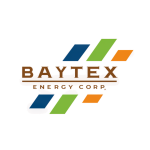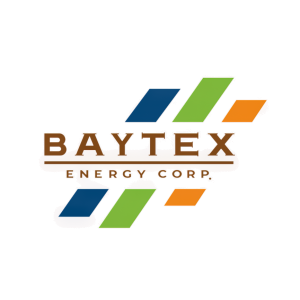Welcome to our dedicated page for Baytex Energy SEC filings (Ticker: BTE), a comprehensive resource for investors and traders seeking official regulatory documents including 10-K annual reports, 10-Q quarterly earnings, 8-K material events, and insider trading forms.
Tracking heavy-oil reserves, commodity hedges, and cross-border tax notes inside Baytex Energy鈥檚 300-page annual report can feel daunting. Add real-time Form 4 insider trades and sudden 8-K asset acquisitions, and the data pile grows quickly. Investors need answers, not overload.
Stock Titan solves the problem. Our AI reads every Baytex Energy annual report 10-K, quarterly earnings report 10-Q filing, and 8-K material event the moment it hits EDGAR, then delivers plain-English highlights. Want the exact change in proved heavy-oil reserves or the impact of the WTI/WCS differential? It鈥檚 surfaced instantly. Curious about dividend sustainability? Our summaries flag free-cash-flow coverage without the accounting jargon.
All Baytex Energy insider trading Form 4 transactions stream to your dashboard in real-time, so you can spot executive stock transactions before the market reacts. Need specifics?
- Baytex Energy Form 4 insider transactions real-time alerts
- Baytex Energy quarterly earnings report 10-Q filing with production-volume breakouts
- Baytex Energy proxy statement executive compensation distilled into one-page takeaways
- Baytex Energy 8-K material events explained by AI within minutes
Whether you鈥檙e comparing quarter-over-quarter Eagle Ford volumes or monitoring abandonment-liability disclosures, Stock Titan combines comprehensive coverage with AI-powered clarity. Stop scrolling through PDFs; start understanding Baytex Energy SEC documents with AI鈥攁nd make faster, better-informed decisions.
Boot Barn Holdings (BOOT) delivered a strong Q1 FY26. Net sales rose 19% YoY to $504.1 million, driven by both retail (91% of mix) and e-commerce (9%). Gross profit expanded 26% to $197.2 million, lifting gross margin 210 bp to 39.1%. SG&A grew 18.8%, allowing operating income to climb 41% to $70.7 million. Net income advanced 37% to $53.4 million; diluted EPS increased to $1.74 from $1.26.
Operating cash flow more than doubled to $73.9 million, supporting capital spending of $31.5 million (largely new store build-outs) and $12.5 million of share repurchases under the new $200 million authorization ($187.5 million remaining). Cash on hand improved to $95.3 million and the $250 million revolver remained undrawn, preserving liquidity.
The balance sheet shows modest inventory growth (+3.6% to $774.1 million) as the chain expanded to 473 stores (up 14 QoQ). Total lease liabilities rose to $597.1 million with a 7.8-year weighted average term. Equity increased to $1.17 billion, aided by earnings, partially offset by treasury share activity.
No goodwill or intangible impairments were recorded; the company remains a single reportable segment. Management notes macro uncertainty (inflation, tariffs) but highlights resilient western/work-wear demand and ongoing store rollout.
Ovintiv Inc. (OVV) Q2-25 10-Q highlights: Revenue inched up 1% YoY to $2.32 bn, but net income slipped 10% to $307 m ($1.18 diluted EPS). Operating income fell 8% to $511 m as lower product pricing offset a 5% reduction in total operating expenses. Risk-management hedges contributed a $87 m gain versus $77 m a year ago, cushioning commodity volatility.
Cash & capital: Operating cash flow was steady at $1.01 bn; capex fell 16% to $521 m, yielding roughly $492 m of free cash. Ovintiv returned $224 m to shareholders via $77 m dividends ($0.30/sh) and $147 m buybacks, shrinking basic shares to 259 m and period-end shares to 257 m.
Balance sheet: Gross debt decreased to $5.33 bn from $5.45 bn year-end, aided by proceeds from the $1.88 bn Uinta Basin divestiture. Liquidity remained solid with $20 m cash and undrawn revolver capacity; interest expense declined to $95 m (-10%).
Portfolio repositioning: On 31 Jan 25 the company closed the C$3.3 bn Montney acquisition, adding 109 k net acres, funded largely by the Uinta sale and short-term borrowings. No impairments were recorded in Q2, but a $730 m charge hit 1H-25, tied to Canadian assets.
Segment view: USA generated $399 m operating profit (-24%), while Canada delivered $131 m (+39%) helped by higher NGL and gas realizations. Corporate/Other posted a $19 m loss.
Key metrics:
- FCF margin: ~21%
- Net debt/annualized EBITDAX: ~1.3脳 (est.)
- Effective tax rate: 23.1% (vs. 27% LY)


